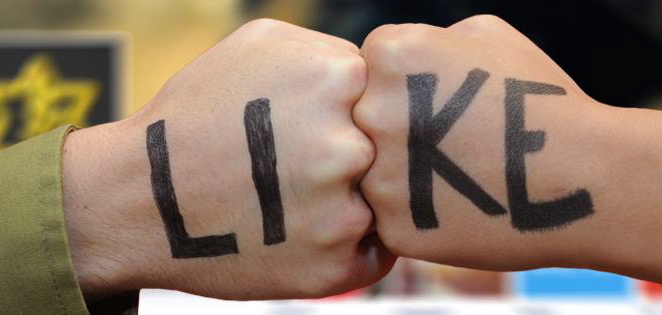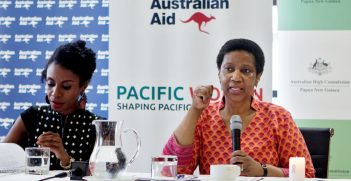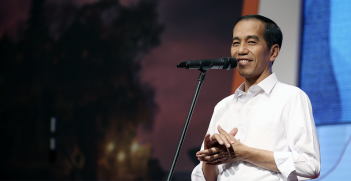Social Media in War: Transparency or Propaganda?

In the 2012 Operation Pillar of Defence, the fog of war gave way to the digital smog of social media. So how did the Israeli Defense Forces specifically spread their message in new forms of transparency and propaganda?
The use of social media in wartime continues to provide new complexities and transparency for facts on the ground. Recently a Russian soldier’s Instagram account exposed that he was stationed and training in ‘rebel held’ Ukraine. But the use of social media in war is not always by mistake. The Israel Defence Forces’ (IDF) use of Facebook and Twitter in 2012 provide possibly the most orchestrated campaign of social media to promote war aims studied to date. The IDF’s systematic content creation in social media provides an interesting challenge to democratic definitions of legitimate representation via persuasive public diplomacy vs. information operations concerned with instrumental control.
Dissolving the Borders Between Propaganda and Public Information
So did the decentralised nature of social media support new modes of impressing authority and legitimacy in times of war? Our findings suggest that social media further dissolves borders between the uses of propaganda and public information to forward political-strategic goals.That is to say public diplomacy, public affairs and militarily framed information operations are combining into a more ambiguous concept. This conflation becomes most visible in times of conflict. The IDF’s use of social media in 2012 provides an exemplar.
The IDF’s Use of Social Media: A Case Study
Israel’s statistical proclivity to engage in military conflict within media-saturated environments makes it a unique case to study. Further, key to the IDF’s evolving models of information propagation is that the function of social media—in wartime or otherwise—has changed dramatically since the IDF first logged on. YouTube drew approximately six billion video views per month in 2008; in 2013 it received that many visits per day from mobile devices alone. At the end of 2008, Twitter had four million users, while Facebook counted 150 million. In 2013, Twitter had more than 230 million active users while Facebook had more than one billion. These order-of-magnitude changes in network reach dramatically shift the calculus of states using social media to disseminate messages worldwide.
In this milieu, the IDF’s evolving war media mark a unique shift in war reporting and ‘transparency’ expectations for democratic subjects. Our paper shows multiple stylish infographic communications delivered near real-time ‘facts from the ground’ from the IDF, and how these were employed as new facets of perception management. To some extent Israel was able to engage the rhetorical power of real-time events while using the rapid frequency and reach of network communications to spread information that, through expanded social sharing and discussion, shaped perceptions of events as they unfolded.
However inciting a decentralised crowd to spread targeted messaging through public social ties created mixed results. Multiple conversations about @IDFSpokesperson publicly vied for legitimacy and representation, bringing a new type of transparency to the discourse. The decentralised nature of social media created an abundance of voices that could not provide an operational theatre to ‘win’ in the traditional military sense.
Aiming to Build Legitimacy for State Actions
Aware of these network dynamics, it is interesting to note that the IDF’s social media messaging was predominately designed to build legitimacy for its actions rather than ‘fight’ a war of words with its enemy. This data suggests that the strategic policy goals sought via the visible wartime use of social media were focused on actors and audiences who could become sympathetic to state goals and offer network effects to spread that message. At the same time the over-abundance of information available online may change calculations of self-help for states. By being seen to transparently share their story through newly instituted official social media channels, states can ride the legitimacy of social connections outside their own borders, regardless of cooperation or interference from other states. Specifically, these digital platforms create messages that states use to recruit new and decentralised actors to (re)communicate and ‘empower’ messages through the network; public diplomacy version 2.0.
Overall the IDF used social media to shape perceptions, inform far-reaching audiences and disseminate near real-time messaging pursuant to state goals. Our main finding from the patterns observed is wartime public diplomacy/information operations spread through social media create new complexities for state practice, efficacy and legitimation. On the one hand social media networks make the effects of propaganda more transparent. However, as current networked terrains of global politics are further enmeshed through social media flows, states will continue to be driven to promote their interests through rapid and accessible public diplomacy and propaganda.
Luke Heemsbergen is a PhD candidate & sessional lecturer at the University of Melbourne who is focussed on the collisions of democratic governing and the networked terrain of contemporary politics. His thesis combines theories of democratic agonism and media studies to critique radical transparency, but he is also currently interested how radically open data affect the social-political-legal realities of 3D printing.
Simon Lindgren is Professor of Sociology at Umeå University, Sweden. He researches digital culture with a focus on social connections, social organization and social movements. He works with developing theoretical as well as methodological tools for analysing discursive and social network aspects of the evolving new media landscape.
This is an abbreviated version of an article “The power of precision air strikes and social media feeds in the 2012 Israel–Hamas conflict: ‘targeting transparency’” published in the Australian Journal of International Affairs.





